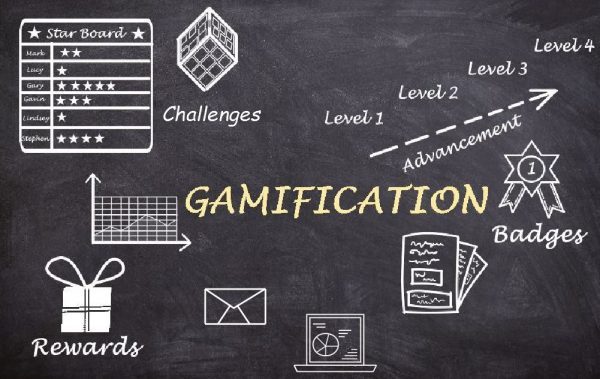This week’s theme and focus is on equitable assessment of learning through multiple means of expression. Equitable assessment is less about the “assessment” itself but more about being explicit about what exactly it is we want students to know and be able to do (definition of mastery in the form of a learning objective) and how exactly we will measure their mastery (through rubrics with clear and objective criteria). The “how” of demonstrating their mastery should generally be up to them, and this is a key component of Multiple Means of Expression in Universal Design for Learning.
This assignment will bring the final components to my week-long lesson plan. In Week Two, I developed a plan that outlined my learning objectives and instruction with placeholders for where my assessments would fit in. This assignment had me spell out the details of my assessments and actually create them. My week-long plan, including assessments, incorporated the visual and performing arts (TPE 1.7) and the interconnectedness with other academic content areas (TPE 4.3). Additionally, by using digital tools in my formative and summative assessments, I am directly demonstrating TPE 4.8, and the appropriate use of these assessments demonstrates my mastery of TPE 5.1. This assignment will address both Week Three Learner Outcomes.
The Choice Board
Even with a well-designed rubric, telling students to “show me what you know” may yield wildly disparate products and can be frustrating for teachers and students alike. A “Choice Board” is a teacher-created menu that gives students options that you know will work for your content area and be appropriately scored with your rubric. Choice Boards typically take the form of a hyperdoc or Google Slide but can also be a sheet of paper handed to students. What makes Choice Boards even more powerful is their potential for engaging and empowering students, making grading practices more equitable, and fostering deeper thinking and learning. While the Choice Board is, in the context of this assignment, solely a summative assessment, choice boards can open the door to student choice in instruction and learning too, in effect, blending instruction and assessments together. By strategically designing your assessment options you can easily integrate the visual and performing arts and other academic areas, and by using Bloom’s Taxonomy or Webb’s Depth of Knowledge as a framework, you push students to deeper, more cognitively challenging thinking. Additionally, knowing what the “choices” are allows you to anticipate what scaffolds and supports will be needed based on what you know about your learners. You can even differentiate the choices themselves to provide just the right challenge for your diverse learners.
Resources
I was to review the following resources before I began my assignment as they would inform my work in developing a formative assessment, a choice board summative assessment, and an accompanying rubric. Some resources gave background on why choice boards are effective tools for differentiating assessments, and others gave tangible examples of how to use them. Some gave templates that I was encouraged to use if appropriate. You will notice some of the resources from ITL526 are available and recommended as this assignment builds on what I learned and applied in the previous course.
Read
- Choice Boards: Benefits, Design, Tips & Differentiation
- Ideas for creating standards-aligned, thematic, performance-based, and strategy-based choice boards (including templates).
- Interactive Learning Menus (Choice Boards) with G Suite – FREE Templates
- Overview of different kinds of choice boards and learning menus with templates and explanations. The Tic-Tac-Toe template is a simple template that can be applied to many content areas.
- Rubric for Rubrics
- As you develop your rubric for your summative assessments, use this resource to evaluate or create your own rubric. Your rubric should be a “level 3” on this rubric.
- Grading for Equity: What it is, why it matters, and how it can transform schools and classrooms
- Read pages Chapter 3: 27-37, Chapter 6: 65-91, Chapter 183-203. Despite our best intentions, oftentimes our grading practices undermine, rather than support, our intentions of creating an inclusive and equitable learning environment. Feldman goes into great detail on how this occurs and what we can do to “lift the veil” on grades and promote a more equitable practice. It is recommended that you read other chapters for more context and explanation.
- Do your grading practices undermine equity initiatives?
- This is a brief overview of the key tenets of Feldman’s 2018 book. The author specifically identifies grading practices that undermine equity and this can help us reflect on our own practices and experiences with inequitable grading.
Watch
- Teacher Prep Tech. (2020, December 21). How to create digital documents using HyperDocs. Make a digital choice board: Teacher education [Video]. YouTube. https://youtu.be/voDT5urR8a4
- In this webinar [48:36] Drs. Dickenson and Swett share ways to use Hyperdocs in both online and traditional teaching. Explore a variety of online resources that you can use to create, modify or curate Hyperdocs in your subject-specific area and learn from the experts as to what makes a hyperdoc successful and how you can differentiate online instruction with hyperdocs. Closed captions are available.
After reading/watching the assigned resources on choice boards and rubrics, I was to create
- One formative assessment that assesses learning progress toward mastery
- Three summative assessment options to assess mastery of my learning objectives in my week-long learning map.
These assessments had to exemplify UDL principles of multiple means of expression. For this assignment, I had to fulfill the required components:
- The formative assessment must be a digital tool and measure progress toward mastery of my learning objective. It could be given at any point during my week.
- The rubric scoring is rooted in equitable grading practices (i.e., it is focused on content and skills rather than subjective or compliance methods) and is tightly aligned with my content standard.
- The three summative assessments must be presented as a choice board which can be a hyperdoc, Google Slide, or some other similar manner.
- Students can choose one of the three summative assessments, and all three must be scored with the same rubric.
- At least one summative assessment must leverage a digital tool.



